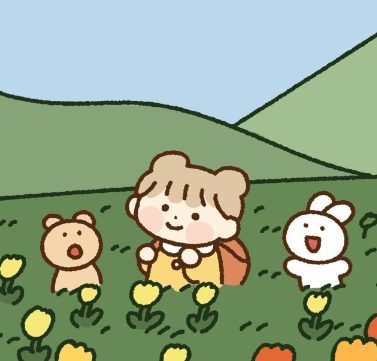[Paper Review] GANSketching: Sketch Your Own GAN 논문 리뷰
업데이트:
- Paper : Sketch Your Own GAN (ICCV 2021) (arxiv, project, code)
- GAN-Zoos! (GAN 포스팅 모음집)
1. GAN Sketching

- Generative model: input(
user's hand-drawn sketch) → output(realistic image)
- user가 그린 sketch의 shape과 pose를 그대로 반영하는 진짜 같은 이미지를 생성
- sketch dataset은 매우 few-shot
- large-scale의 실사 image dataset으로 generative를 학습시킨 다음, 이 pre-trained model과 user sketch가 잘 match되도록 fine-tuning method를 도입
- cross-domain adversarial loss
- regularization method
2. Related Work
Sketch Editing
- Intuitive, Interactive Beard and Hair Synthesis with Generative Models
- FaceShop: Deep Sketch-based Face Image Editing
Sketch Generation
Unpaired learning
- CycleGAN: Unpaired Image-to-Image Translation using Cycle-Consistent Adversarial Networks: review
- MUNIT: Multimodal Unsupervised Image-to-Image Translation: review
Photo2Sketch
3. Method
⭐ Challenging ⭐
- user-provided sketch data의 수가 매우 적음
- input과 output data의 domain이 달라서 sketch data로부터 실사 이미지 생성이 어려움
3.1 Cross-Domain Adversarial Learning
large-scale training dataset: $\mathbf{x} \sim p_{\text {data }}(\mathbf{x})$- pre-trained GAN: $G(\mathbf{z} ; \theta)$
- low-dim
z에서 imagex를 생성하는 Generator
- low-dim
- pre-trained GAN: $G(\mathbf{z} ; \theta)$
-
few human sketch: $\mathbf{y} \sim p_{\text {data }}(\mathbf{y})$ - Goal: 새로운 GAN model $G(\mathbf{z} ; \theta’)$를 학습
- 이 모델은 X의 distribution을 가지는 이미지를 생성하지만, output 이미지가 sketch (y)와 비슷함
Cross-Domain Image Translation Network
-
우리는 user가 제공한 sketch에 대응되는 ground truth이미지를 가지고 있지 않음 (이전 연구들이 어려움을 겪은 원인)
- 새로운 cross-domain image translation network 도입
- $F$: pre-trained Photo-sketch network 사용
Cross-Domain Adversarial Learning

- 이 loss는 sketches $\mathcal{Y}$랑 match되는 generated image를 생성하도록 도와줌
- PhotoSkech(F)의 output과 user sketch의 차이가 오히려 object의 shape을 더 잘 학습하는데 도움을 줌
3.2 Image Space Regularization
3.1의 $\mathcal{L}_{\text {sketch }}$만을 사용하면 생성시 image의 quality와 diversity가 현저히 떨어진다.
→ Generator가 original dataset의 분포를 잘 따르도록 loss를 추가
\[\begin{aligned}\mathcal{L}_{\text {image }} &=\mathbb{E}_{\mathbf{x} \sim p_{\text {data }}(\mathbf{x})} \log \left(D_{X}(\mathbf{x})\right) \\&+\mathbb{E}_{\mathbf{z} \sim p(\mathbf{z})} \log \left(1-D_{X}(G(\mathbf{z}))\right)\end{aligned}\]Weight regularization as an alternative
다음 loss를 통해 weight regularization을 할 수도 있다.
\[\mathcal{L}_{\text {weight }}=\left\|\theta^{\prime}-\theta\right\|_{1}\]이 regularization은 $\mathcal{L}_{\text {image }}$를 통한 image space regularization보다 성능이 약간 저하된다. 그러나 이를 적용하면 image quality와 shape matching의 balance를 맞추기 용이하다.
3.3 Optimization
Full objective
\[\mathcal{L}=\mathcal{L}_{\text {sketch }}+\lambda_{\text {image }} \mathcal{L}_{\text {image}}\]- $\lambda_{\text {image }} =0.7$ 로 두어 적절히 image를 regularization
minimax objective
\[\theta^{\prime}=\arg \min _{\theta^{\prime}} \max _{D_{X}, D_{Y}} \mathcal{L}\]- Generator $G(\mathbf{z} ; \theta’)$
Which layers to edit.
model이 overfitting되는 걸 막고, fine-tuning 속도를 높이기 위해 저자들은 StyleGAN2의 mapping network를 fine-tuning하였다.
→ MLP를 수정하면 target distribution을 더 잘 포착하기 때문에 few-shot 연구에 효과적이라고 보고
Pre-trained weight
- pre-trained Photosketch network $F$ 사용 (training 동안 fix)
- $D_X, D_Y$: original GAN의 pre-trained weight를 사용 → fine tuning
Data augmentation
- Differentiable augmentation for data-efficient gan training
- few-shot으로 GAN을 학습하는 경우, Discriminator가 훈련 데이터를 기억하여 성능이 크게 저하되는 문제가 있음
- 이를 해결하기 위해 differentiable augmentation 논문은 다양하게 data를 augmentation!(cut-off, translation, color …)
저자들은 위 논문의 augmentation 기법을 sketch 훈련에 사용(특히 translation aug를 사용했다고 함)
- 이 기법은 한장 or 몇장 없는 hand-drawn sketch input를 aug하는데 많은 도움을 주었다고 report
4. Experiments
4.1 Evaluations
Datasets
- Photosketch model로 실제 이미지(LSUN [69] horses, cats, and churches)를 sketch로 변환
- user sketch input와 비슷한 shape과 pose을 가진 이미지를 hand-select (1에서 30장정도)
- input sketch와 비슷한 이미지 2500장을 추가적으로 hand-select
- chamfer distance가 작은 이미지(비슷한 이미지들) 10,000장 중에서 골랐다고 함
Our method is given access only to the 30 designated sketches; the sets of 2,500 real images represent the real but unseen target distributions.
Baselines


Quantitative analysis
- baseline보다 FID가 더 좋음
- baseline은 sketch를 잘 반영 못함

Ablation study
Augmentation
- aug를 한다고 반드시 성능이 좋아지지는 않음
- 그러나 human-created sketch에 대해서는 처음에 반드시 augmentation을 해야함
Comparing regularization methods

- regularization을 하면 $\mathcal{L}_{\text {sketch}}$로만 학습을 했을 때보다 FID가 좋아짐
- 이미지 quality도 향상되며
- 더 다양한 이미지가 생성
- $\mathcal{L}{\text {image}}$ 로 학습한 결과가 $\mathcal{L}{\text {sketch}}$ 로 학습한 것보다 좋음
D scratch
pre-trained Discriminator를 사용하지 않고 random으로 초기화해서 scratch부터 학습시킨 $D_Y$를 사용했더니 현저하게 성능이 안좋아졌다고 함
- GAN fine-tuning 쪽 논문들 참고
W-shift
저자들은 mapping network에 약간의 bias를 추가하여 W space를 shift 해봤다고 한다. 그 결과 성능이 좋아지기는 하지만, 그냥 전체 mapping network를 fine-tuning하는게 더 효과적이라고 한다.
Fewer sketch samples

Quantitative analysis
- 1 or 5-shot으로 학습한 GAN Sketching 모델이 Original 모델보다 효과적
- 30-shot은 결과가 엄청남
Testing using real human sketches
Single sketch로 학습시킨 결과

Multiple sketch로 학습시킨 결과

- single sketch로 학습시켰을 때 실패했던 case에 대해서 성공하기도 함
User sketch를 augmentation

- data를 augmentation했더니 성능이 더 향상됨

- StyleGAN2 FFHQ model을 customizing & 4 user sketch로 학습한 결과 (w/ aug)
4.2 Applications
Latent space edits

GANSpace에서 제시한 방법대로 latent editing을 할 수 있음

interpolation도 가능
Natural image editing with our models

(a) original model을 활용하여 real image를 latent space로 projection할 수 있음 (z)
- 다음 논문을 참고하여 image projection
(b) sketch를 가지고 훈련된 standing cat customed model에 projected z를 feeding
(c) 배경이나 texture는 보존되면서 새로운 shape과 pose를 가진 이미지 생성
(d) GANSpace 모델로 editing!
Interpolating between customized models

2가지 방식으로 interpolation이 가능
-
W-space에서 interpolation
- 같은 noise vector
z를 두 개의 다른 model에 넣어서 two latents를 얻음 $w_1, w_2$ - interpolation: $(1-\alpha) w_{1}+\alpha w_{2}$
- 같은 noise vector
-
model weight를 interpolation
$(1-\alpha) \theta_{1}+\alpha \theta_{2}$
5. Limitation
- 모든 sketch에 대해서 동작하는게 아님, failure case들이 있음

- real-time으로 모델을 customizing 하는게 불가능함
- 현재 모델은 훈련동안 30K의 iteration이 필요
- pre-trained model을 사용하지만 pre-trained model을 학습시키는데 사용한 training dataset도 필요하다.
- $\mathcal{L}_{\text {image }}$로 모델을 학습시킬 때, original training dataset이 필요했었음
- pose나 shape을 변경할 수는 있지만, color나 texture는 control이 어려움

댓글남기기